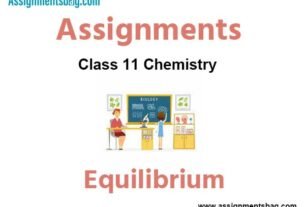Please refer to Assignments Class 11 Biology Respiration in Plants Chapter 14 with solved questions and answers. We have provided Class 11 Biology Assignments for all chapters on our website. These problems and solutions for Chapter 14 Respiration in Plants Class 11 Biology have been prepared as per the latest syllabus and books issued for the current academic year. Learn these solved important questions to get more marks in your class tests and examinations.
Respiration in Plants Assignments Class 11 Biology
Question. Which of the following ETC complex is directly involved in reduction of oxygen ?
(a) complex-I
(b) complex-II
(c) comlex-III
(d) comlex-IV
Answer
D
Question. How many ATP molecules and during which steps, are directly synthesised in EMP pathway from one glucose molecule?
(a) 4 ATP, 2 in each PEP to pyruvic acid and BiPGA to PGA
(b) 8 ATP, 4 in each PEP to pyruvic acid and BiPGA to PGA
(c) 2 ATP, 1 in each Glucose to Glucose-6-P and Fructose-6-P to Fructose 1, 6 BiP
(d) 4 ATP, 2 in each Glucose to Glucose-6-P and Fructose-6-P to Fructose 1, 6 BiP
Answer
A
Question. Complete oxidation of which of the following respiratory substrate evolve less volume of CO2 as compare to volume of O2 consumed ?
(a) Fats
(b) Proteins
(c) Carbohyrates
(d) Both (a) and (b)
Answer
D
Question. When proteins are respiratory substrates the ratio of CO2 /O2 would be about :
(a) 1.0
(b) 0.7
(c) 0.9
(d) 1.3
Answer
C
Question. The energy released by oxidation of respiratory substrates :
(A) Comes out in a single step to increase the possibility of maximum ATP production
(B) is not used directly
(C) is used directly in the energy requiring processes of the organisms
(D) is trapped as chemical energy in the energy currency of the cell
(a) C and D are incorrect
(b) B and D are correct
(c) A and B are correct
(d) A and D are incorrect
Answer
B
Question. During TCA which of the following intermediate is a result of two successive decarboxylations ?
(a) Oxalosuccinic acid
(b) a-ketoglutaric acid
(c) Succinyl Co-A
(d) Cis aconitic acid
Answer
C
Question. Which of the following enzyme(s) is/are involved in the conversion of pyruvic acid into CO2 and ethanol?
(a) Pyruvic acid dehydrogenase
(b) Alcohol decarboxylase
(c) Both (a) and (b)
(d) Pyruvic acid decarboxylase
Answer
D
Question. Fermentation differs from aerobic respiration :
(a) in having partial breakdown of glucose
(b) in producing less ATP per glucose
(c) in having slow oxidation of NADH2 to NAD+
(d) All of the above
Answer
D
Question. Plants donot present great demands for gaseous exchange because :
(a) They are autotrophic
(b) Photosynthesis and respiration work mutually
(c) In plants there is less need of energy
(d) Plants are regulators
Answer
B
Question. An enzyme catalysing a transfer of a group, G between a pair of substrate S and S’ as follows :
S G + S’ → S + S’ G
G = phosphate or hydrogen or any other group, the enzyme is related with which of the following class?
(a) Transferases
(b) Dehydrogenases
(c) Both (a) and (b)
(d) Either (a) or (b)
Answer
D


